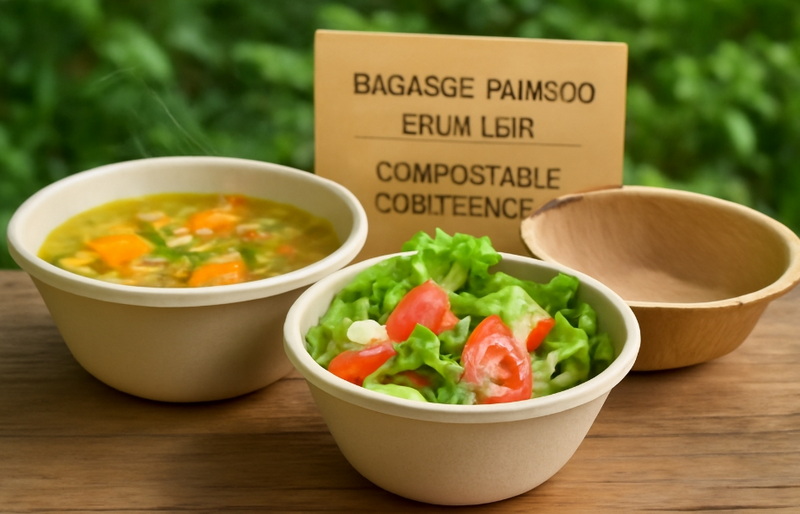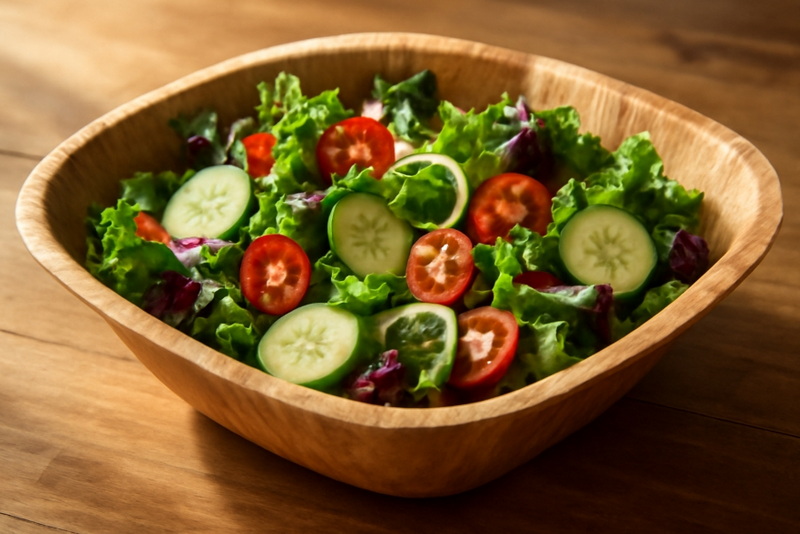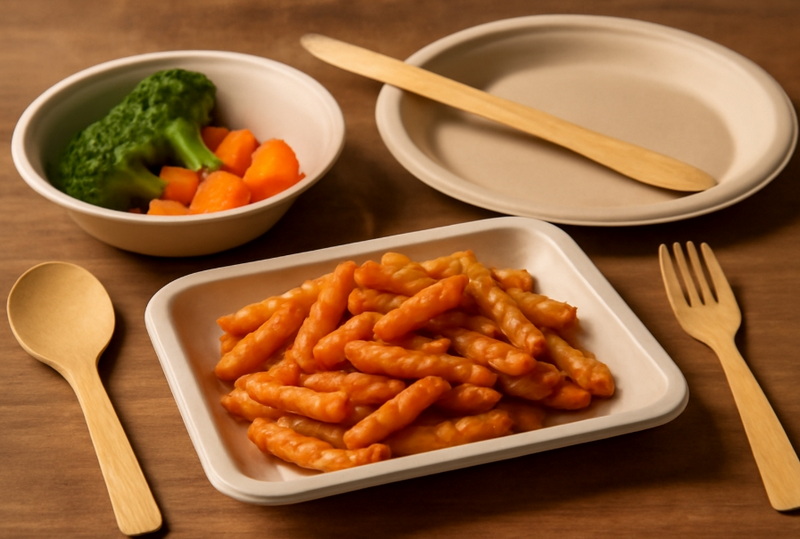
Content Menu
● Understanding the Materials
>> What Are Plant Fiber Bowls and Lids?
>> What Are Plastic Bowls and Lids?
● Comparing Durability: Key Factors
>> Structural Strength
>>> Plant Fiber Bowls and Lids
>>> Plastic Bowls and Lids
>> Heat Resistance
>>> Plant Fiber Bowls and Lids
>>> Plastic Bowls and Lids
>> Leak and Oil Resistance
>>> Plant Fiber Bowls and Lids
>>> Plastic Bowls and Lids
>> Impact and Drop Resistance
>>> Plant Fiber Bowls and Lids
>>> Plastic Bowls and Lids
>> Storage and Shelf Life
>>> Plant Fiber Bowls and Lids
>>> Plastic Bowls and Lids
● Real-World Use Cases
>> Food Service and Takeout
>> Home Use
● Environmental and Health Considerations
>> Compostability and Biodegradability
>> Chemical Safety
● Performance Comparison Table
● The Verdict: Which Is More Durable?
● Conclusion
● FAQ
>> 1. What foods are best suited for plant fiber bowls and lids?
>> 2. Can plant fiber bowls and lids be microwaved or frozen?
>> 3. How do plant fiber bowls and lids impact the environment compared to plastic?
>> 4. Are there any health concerns with using plant fiber or plastic bowls and lids?
>> 5. How should plant fiber bowls and lids be disposed of after use?
The global movement toward sustainability has sparked a growing interest in eco-friendly alternatives to traditional plastic products. Plant fiber bowls and lids have become increasingly popular for food packaging, takeout, and catering services. While their environmental benefits are widely recognized, many people still question how these plant-based options compare to conventional plastic in terms of durability. This comprehensive article explores the durability of plant fiber bowls and lids versus their plastic counterparts, examining their performance under various conditions, real-world applications, and the implications for consumers and businesses.

Understanding the Materials
What Are Plant Fiber Bowls and Lids?
Plant fiber bowls and lids are made from renewable resources such as sugarcane bagasse, bamboo, palm leaves, or other agricultural byproducts. These materials are processed into pulp, molded into shape, and sometimes treated for water and oil resistance. The result is a sturdy, compostable product that can handle a variety of foods, both hot and cold.
What Are Plastic Bowls and Lids?
Plastic bowls and lids are typically manufactured from petroleum-based polymers like polypropylene, polyethylene terephthalate, or polystyrene. These materials are known for their strength, flexibility, and resistance to moisture, making them a staple in the food service industry for decades.
Comparing Durability: Key Factors
Structural Strength
Plant Fiber Bowls and Lids
Plant fiber bowls, especially those made from bagasse or bamboo, are engineered to be sturdy and resistant to leaks. They can handle both hot and cold foods and are generally cut- and oil-resistant. However, extended exposure to liquids can cause some plant fiber bowls to soften, especially if the food is very moist or left for a long period. While they are microwave safe, extremely wet or oily foods may eventually compromise their structure.
Plastic Bowls and Lids
Plastic bowls, particularly those made from polypropylene, are highly durable. They can withstand heavy foods, resist cracking under pressure, and are less likely to deform when exposed to moisture or oil. While generally robust, lightweight plastic bowls can be prone to breaking or cracking under heavy loads or rough handling.
Heat Resistance
Plant Fiber Bowls and Lids
Most plant fiber bowls can withstand high temperatures, making them suitable for hot foods and microwave use. Their lids, made from the same material, are also heat-resistant and maintain integrity when used with soups or hot entrees. Prolonged exposure to high heat and moisture can lead to some softening, but they generally hold up well for typical serving durations.
Plastic Bowls and Lids
Plastic bowls, especially those made from polypropylene, are also microwave safe and can handle hot foods without warping. Some types of plastic, however, may deform under high temperatures. There are also concerns about certain plastics releasing chemicals when heated, which has led to increased scrutiny and a push for safer alternatives.
Leak and Oil Resistance
Plant Fiber Bowls and Lids
Modern plant fiber bowls are designed to be water and oil-resistant, making them suitable for soups, curries, and greasy foods. Lids fit snugly and help prevent spills during transport. If left with liquids for extended periods, some plant fiber products may begin to absorb moisture, leading to softening or minor leaks.
Plastic Bowls and Lids
Plastic bowls are naturally impermeable to liquids and oils, making them highly reliable for both storage and transport of wet foods. Lids must fit securely to prevent leaks; poorly designed or lightweight lids can sometimes pop off during handling.
Impact and Drop Resistance
Plant Fiber Bowls and Lids
These bowls are robust for single-use applications but can crack or chip if dropped from a height or subjected to strong impacts. Their rigidity is an asset for food service but less so for repeated rough handling. Lids made from plant fibers are generally sturdy but may deform if bent excessively.
Plastic Bowls and Lids
Plastic bowls are more flexible and can absorb minor impacts without breaking. High-quality plastic lids are also less likely to crack or warp under stress.
Storage and Shelf Life
Plant Fiber Bowls and Lids
These products are stable under normal storage conditions but should be kept dry to prevent premature degradation. They have a comparable shelf life to plastic if stored properly. Humidity and moisture can weaken plant fiber bowls over time.
Plastic Bowls and Lids
Plastic bowls are unaffected by humidity and can be stored for years without losing structural integrity.

Real-World Use Cases
Food Service and Takeout
Plant fiber bowls and lids are increasingly chosen by restaurants and caterers aiming to reduce their environmental footprint. They are suitable for a wide range of foods, including hot entrees, salads, and desserts. Their lids provide secure closure for takeout and delivery. Plastic bowls and lids remain dominant in many food service settings due to cost, durability, and familiarity. They are preferred for foods that require longer storage or are particularly wet or oily.
Home Use
Plant fiber bowls and lids are ideal for picnics, parties, and events where disposability and compostability are priorities. Not intended for repeated use, they perform well for single-serving scenarios. Plastic bowls and lids are commonly used for leftovers, meal prep, and situations where containers may be reused multiple times. Plastic lids are favored for their tight seal and ability to withstand repeated opening and closing.
Environmental and Health Considerations
Compostability and Biodegradability
Plant fiber products are fully compostable and biodegradable in commercial composting facilities. They break down into nutrient-rich soil within months, reducing landfill waste and environmental impact. Plastic bowls and lids are non-biodegradable and can persist in the environment for hundreds of years. Recycling rates are low, and improper disposal contributes to pollution.
Chemical Safety
Plant fiber bowls and lids are free from harmful chemicals and toxins. Some products may contain additives for grease resistance, but many brands now offer options with no added chemicals. Plastic bowls may contain additives or release chemicals when exposed to high heat. Concerns over microplastics and chemical leaching have increased demand for safer alternatives.
Performance Comparison Table
| Feature | Plant Fiber Bowl & Lid | Plastic Bowl & Lid |
| Structural Strength | Sturdy, may soften with liquid | Very strong, resists cracking |
| Heat Resistance | High, microwave safe | Microwave safe (PP), varies |
| Leak/Oil Resistance | Good, may absorb over time | Excellent, impermeable |
| Impact Resistance | Rigid, can crack if dropped | Flexible, absorbs impacts |
| Storage/Shelf Life | Stable if dry, compostable | Long shelf life, non-biodegradable |
| Environmental Impact | Compostable, renewable | Non-biodegradable, polluting |
| Chemical Safety | No toxins, PFAS-free options | May leach chemicals |
The Verdict: Which Is More Durable?
In terms of pure durability—resistance to breakage, deformation, leaks, and heat—plastic bowls and lids generally outperform plant fiber alternatives. Plastic's flexibility and impermeability make it a reliable choice for demanding applications, long-term storage, and repeated use.
However, plant fiber bowls and lids have closed the gap considerably. Advances in material science have produced plant fiber products that are sturdy, heat-resistant, and leak-resistant enough for most food service needs. For single-use scenarios, especially where environmental impact is a concern, plant fiber bowls and lids offer a compelling balance of durability and sustainability.
The choice ultimately depends on the intended use:
- For single-use, eco-conscious events or businesses, plant fiber bowls and lids provide sufficient durability while dramatically reducing environmental harm.
- For situations requiring maximum strength, long-term storage, or repeated use, plastic bowls and lids remain the more durable option.
Conclusion
Plant fiber bowls and lids have evolved into a practical, durable alternative to plastic for many food service applications. While plastic still leads in sheer durability, the environmental advantages and steadily improving performance of plant fiber products make them an excellent choice for those seeking a more sustainable solution. As technology advances and composting infrastructure expands, plant fiber bowls and lids are poised to become the new standard in eco-friendly food packaging.

FAQ
1. What foods are best suited for plant fiber bowls and lids?
Plant fiber bowls and lids are ideal for serving both hot and cold foods, including soups, salads, rice dishes, and desserts. They are designed to resist leaks and withstand heat, making them versatile for most food service needs. However, for extremely wet or oily foods stored for long periods, plastic may still offer superior performance.
2. Can plant fiber bowls and lids be microwaved or frozen?
Yes, most plant fiber bowls and lids are microwave and freezer safe. They can handle high temperatures without releasing toxins or deforming, making them suitable for reheating and storing leftovers.
3. How do plant fiber bowls and lids impact the environment compared to plastic?
Plant fiber products are compostable and biodegradable, breaking down into nutrient-rich soil within months in commercial composting facilities. Plastic bowls and lids, on the other hand, are non-biodegradable and contribute to long-term pollution and landfill waste.
4. Are there any health concerns with using plant fiber or plastic bowls and lids?
Plant fiber bowls and lids are generally free from harmful chemicals and toxins, with many brands offering PFAS-free options. Plastic bowls may contain additives and can release chemicals when heated, raising concerns about potential health risks.
5. How should plant fiber bowls and lids be disposed of after use?
Plant fiber bowls and lids should be composted in a commercial facility whenever possible. If composting is not available, they can be disposed of in regular waste, where they will still break down faster than plastic. Plastic bowls and lids should be recycled if facilities exist, but many end up in landfills due to low recycling rates.

















